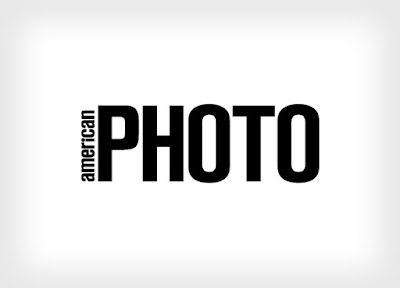A Sad Goodbye to American Photo
0
I wasn't born in the age of Life Magazine, an iconic emblem of its time in politics and everything else going on in the world. Instead, in my time, I grew up looking gleefully at American Photo magazine, where photojournalism and photography lifestyle was all that mattered. To me, it was an iconic magazine any budding photographer would be proud to read.
Pictures told stories, the rest was up to you—the reader. How you interpreted those pictures says it all. I also grew up reading Newsweek and Time magazine, so I learned very early on what American political propaganda does to you.
For me American Photo (or just Photo Magazine) died after having a long and fruitful life in print, and now lives on in digital.
Photo Magazine was once owned Hachette Filipacchi Media of France, and it was sold to Bonnier Corporation in 2009. That probably killed it for them. The french owned Photo magazine still lives on to this day.
The Decline of American Photo
What caused the magazine to shutter? In the 80s, it was a connoisseurs' magazine. It featured great images of both photojournalism and commercial photography. It didn't have the gear-head approach to selling you stuff and camera companies advertised on it because it was highly respected by professionals and what better way to reach out to them than to use this medium.
American Photo died the way most print magazines did. It failed to compete with mainstream photography content found on the Internet. For the most part, it failed to spot real talents in waiting and concentrated too heavily on artistic photography in the US, which didn't really appeal to people wanting to know more how the industry was doing. American isn't the center of the world of photography, that title unfortunately still belongs in Europe. This is probably why Photo France magazine is still around in print.
How do you become a success as a art photographer? How do you make images that people will pay for? What is an artist doing in photography? Will you ever get famous? Apparently not.
If you follow the American example of how to get rich real quick, you can look no further than Richard Prince, the self styled artist who appropriates other people's photos, desecrates them with his splashes of color and calls it art. He has also stolen instragram photos from other people, and sold them for US$100,000.
In America, he is a huge success in photo-art. His victims are fighting back though I am not sure if that would be bring any success. The problem with suing people like Richard Prince is that he's loaded and he can afford to bankrupt you with legal appeals. Sucide girls recently stole his thunder by posting their own instagram print for sale at a fraction of the price asked by Richard Prince for his stolen art.
Would be the sort of news item American Photo would cover to show success? Of course not. American's taste for art is borderline porn with a mix of apathy and repugnant appreciation.
Respect and Value of the Profession
Photojournalism is officially dead. There is still some hope in commercial, wedding and sports photography but these folks probably are grinders and not photographic stars. Even when you talk about the professional photojournalist in the US, then third world professional soccer players make money than them.
American Photo has gotten so ahead of itself that there isn't a noteworthy pool of photographers to tap on. Editorially, they failed to make it Photo Americas rather than (North) American Photo. I am sure there heaps of talents in Latin America, brave photojournalist taking their fight to the mega corporations in the Amazon basin to the political changes of the Amazon basin. Then again, editorial content cost money so who is picking up the tab? Everyone (including magazines) want cheap content and that's not always possible unless you only want photos of hookers working down the street from the office.
Photographers need money to get funded for something they want to undertake that are non-commercial and there is a lot of marketing involved. So if you want to undertake a Brazilian journey of sorts to photograph the destruction or the animals facing extinction in the Amazon, you better save money for that.
American photography isn't going in the direction where people appreciate what they do. As a career, it is just another job. American Photo magazine failed to recognize the talent elsewhere in the English speaking world too, and that's probably one another reason why they failed. Brands that advertise with American Photo want to know the readership and print numbers (about 100,000 copies when they ceased publication) and if you command a premium for advertising, your reader profile must show that as well. It is all economics.
The glamor one thinks of, working with celebrities and shooting art that people buy, can be achieved with just Adobe Photoshop. People have photoshopped celebrities into their parties so you probably have a better chance at making a living as a Photoshop artist than a photojournalist in America.
Content is king, and we are talking quality content. American Photo Magazine....may you rest in peace.












.JPG)

